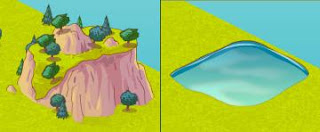Finally got a chance to visit World Cyber Games 08 at Suntec City level 4. I missed the first two days due to heavy work commitments. The event is held from 7th to 10th August 08. Well, the admission is free and I actually expect a much larger crowd. I guess the smaller turnout may be due to the National Day Parade, which is a huge crowd drawer.

Nonetheless, it is still fun to see fellow gamers engaging in competition with adrenaline pumping excitement. The event is not all about cyber games, since there are also booths for the WoW TCG competition. In fact, the goodie bags came with a few WoW TCG cards thrown in! The goodie bags also came with magazines like Playworks and EGM.
The big events are held at the end of the rooms, where a stage with two huge displays are mounted. Players and visitors could look at the game play, and there were much cheering and clapping as the games proceed.

Due to the nature of the event, there are plenty of sponsors, e.g. Samsung, Microsoft, and Intel. You could see the list of sponsors, as well as the prizes for each game category at this WCG site. The site only shows the prizes for local category, but navigate around and you see the related Open Category site.
Surprisingly, accompanying the car racing games are booths selling actual car accessories. Hmm I thought booths selling games, and related merchandise like magazines, toys...etc would make more sense.




















